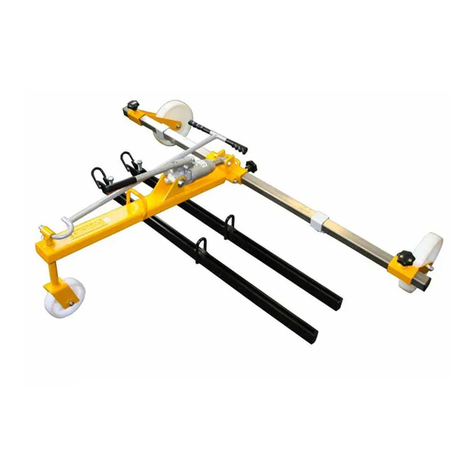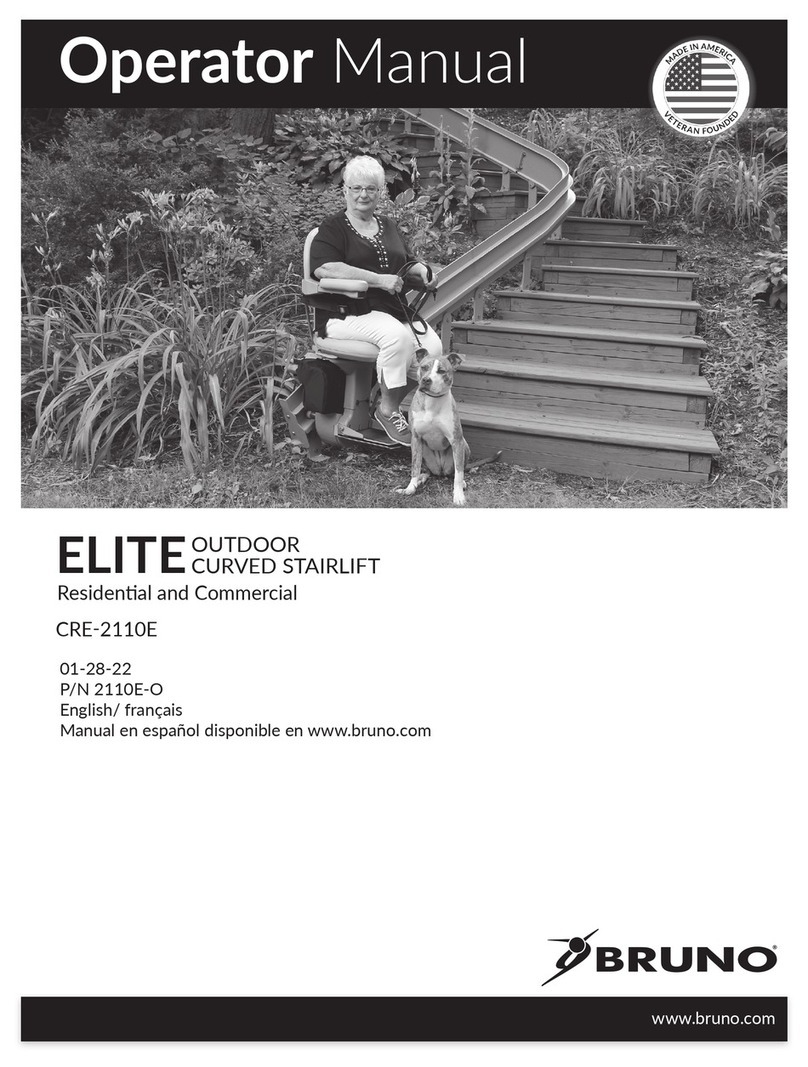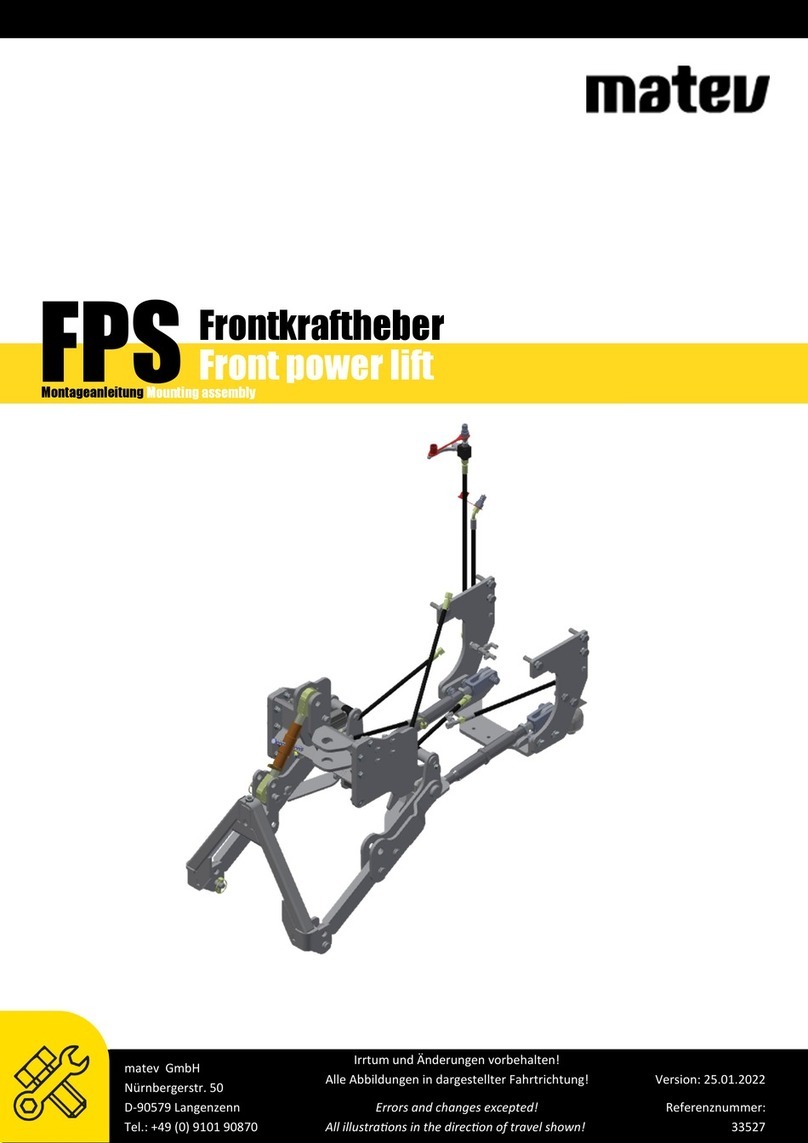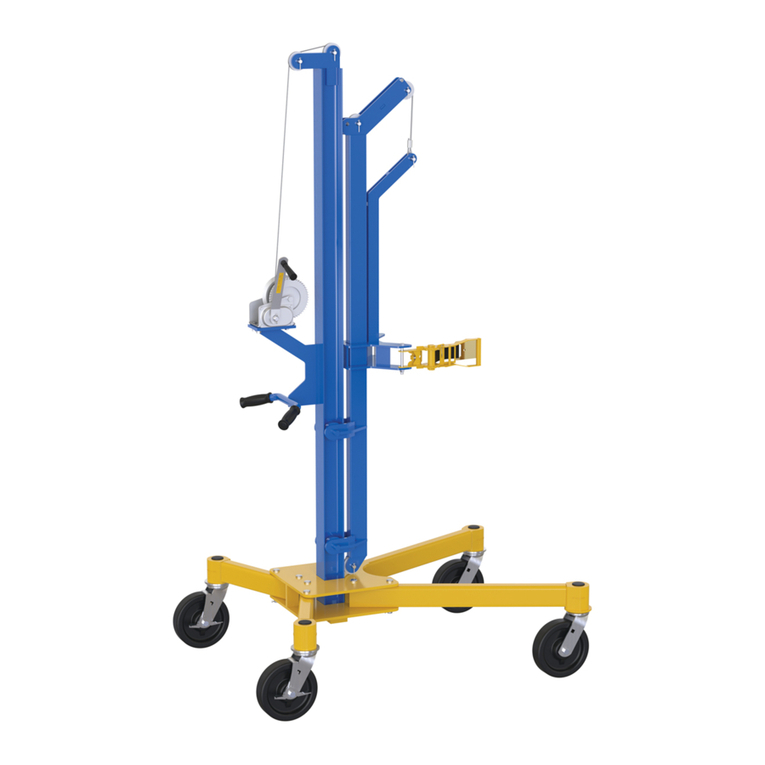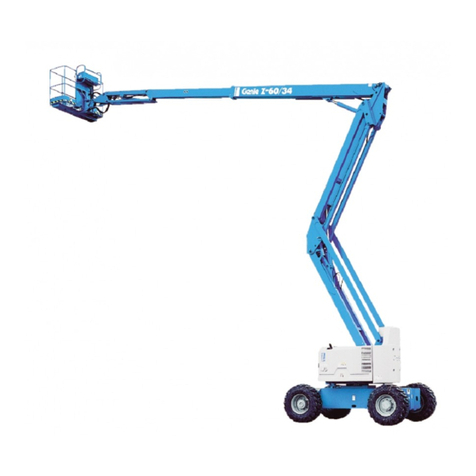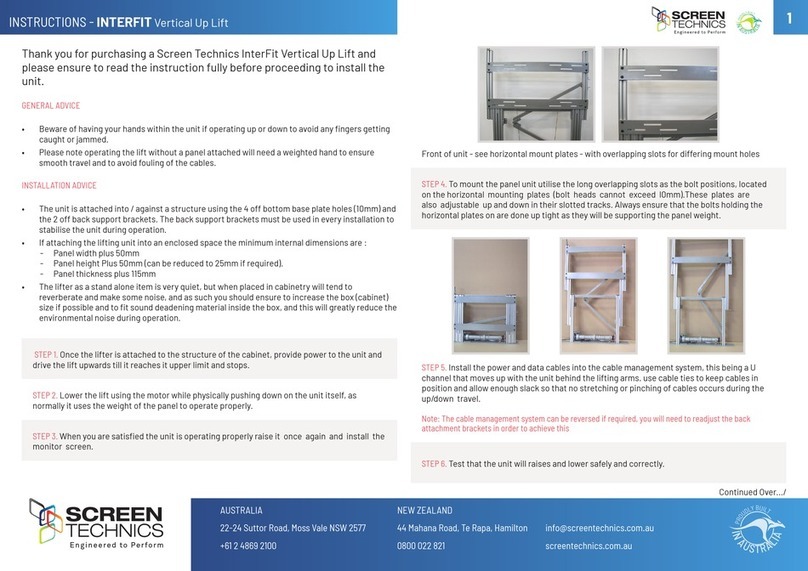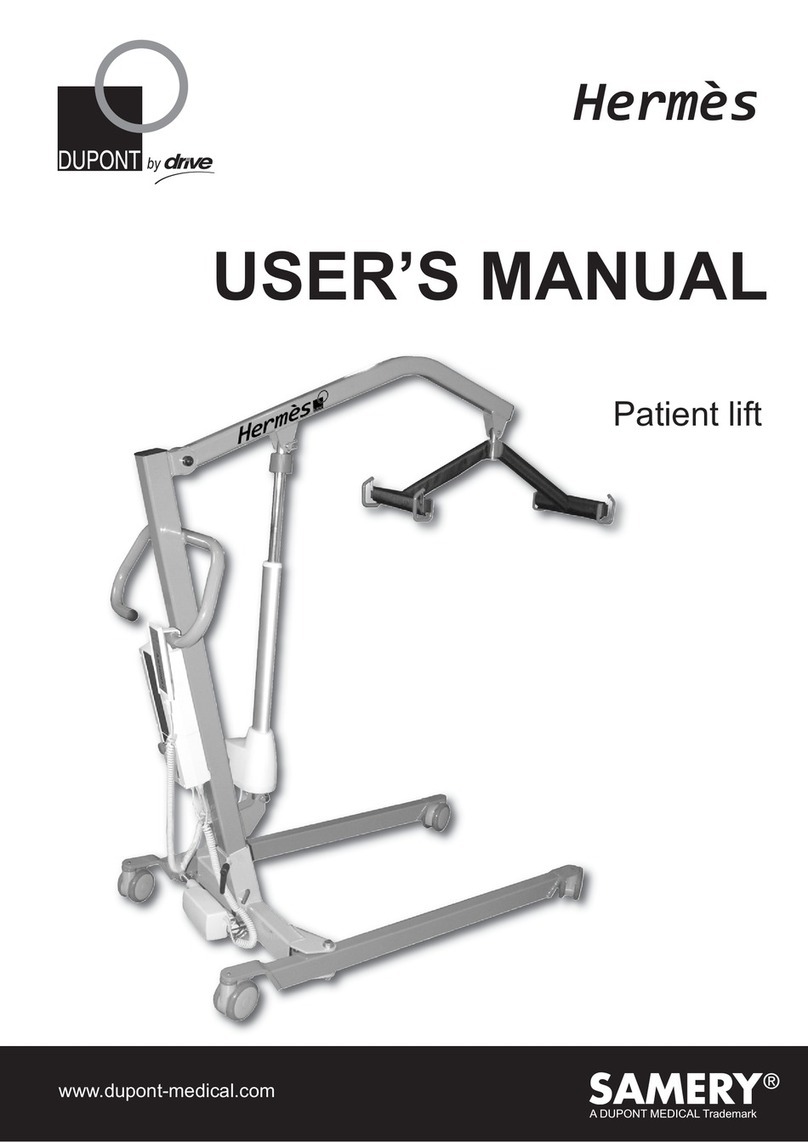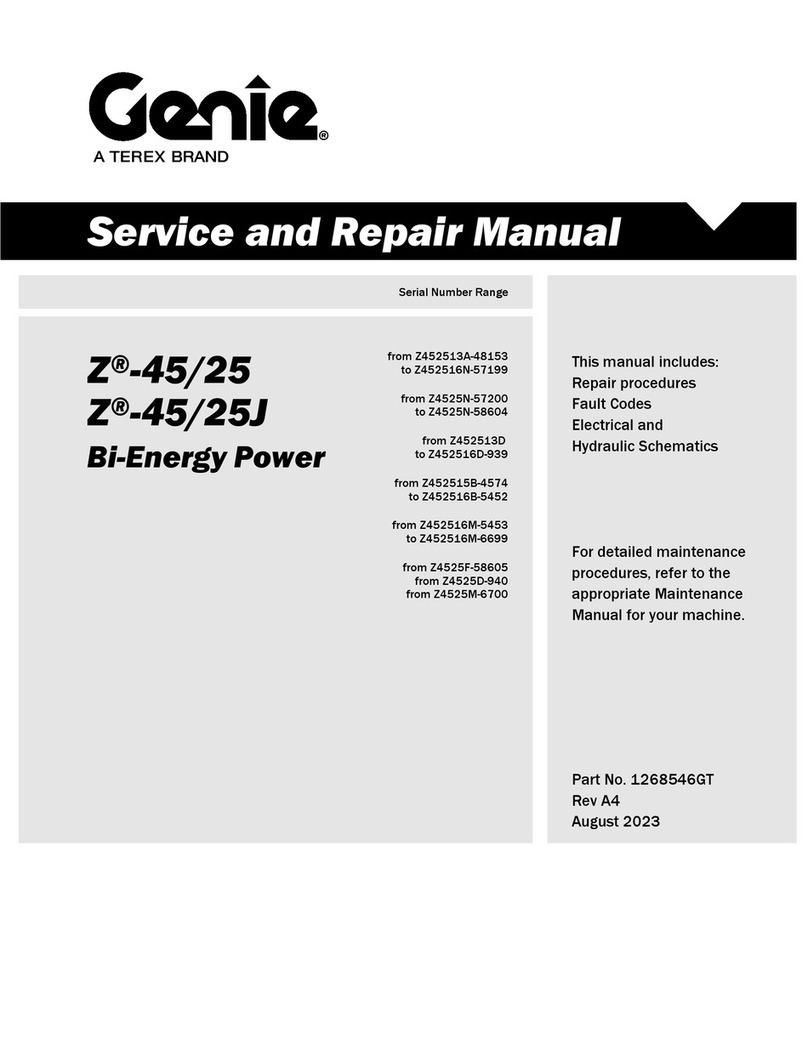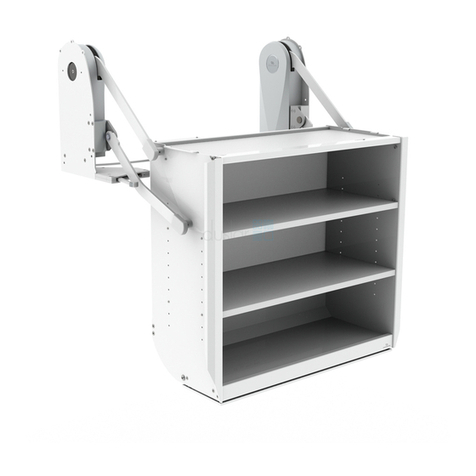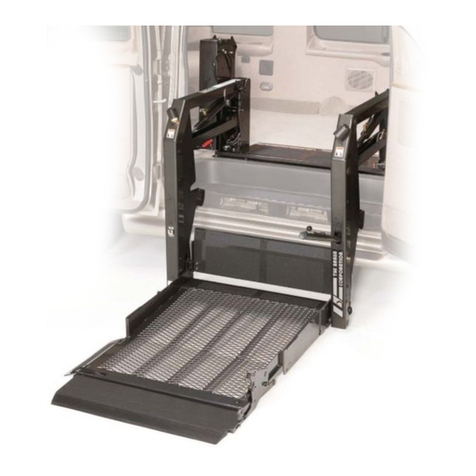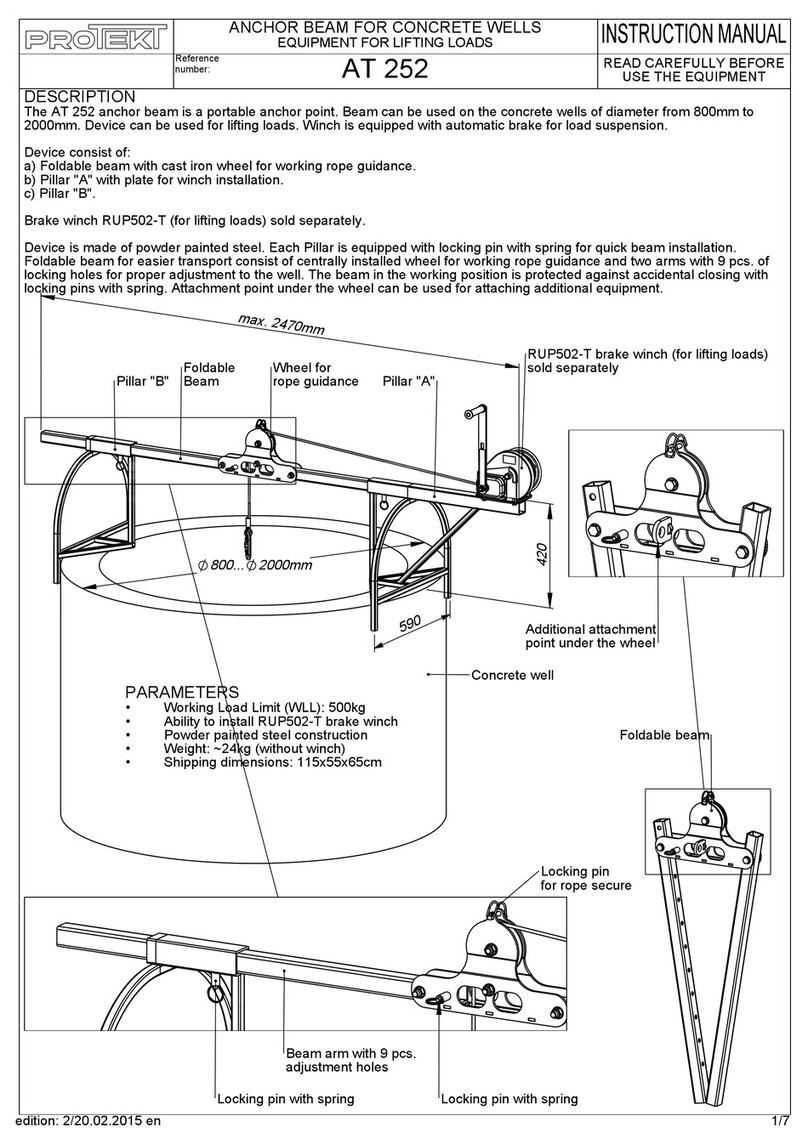2
• • • User Manual ref0208
• • • • • • • • • • • • • Content
1 Introduction
1.1 About this manual................................................................................2
1.2 Symbols ..............................................................................................2
1.3 Contents of the package.......................................................................2
1.4 The OpeMax hoist................................................................................3
1.5 Points of attention................................................................................4
2 Description
2.1 Overview OpeMax ................................................................................5
2.2 Wheels................................................................................................6
2.3 Engine ................................................................................................6
2.4 Battery................................................................................................7
2.5 Battery charger....................................................................................8
2.5.1 Charging the batteries..........................................................................8
2.5.2 Life span of the batteries......................................................................9
2.6 Control box..........................................................................................9
2.6.1 Emergency button................................................................................10
2.6.2 Emergency control ...............................................................................11
2.6.3 Battery indicator ..................................................................................11
2.7 Hand-held control ................................................................................12
2.8 Hanger bar ..........................................................................................13
2.9 Slings..................................................................................................14
2.9.1 Sling attachment..................................................................................14
2.9.1 General information about slings...........................................................15
2.9.2 Types and sizes of slings ......................................................................16
2.9.3 Washing instructions slings ...................................................................18
3 Use
3.1 Before use...........................................................................................17
3.2 Possible transfers.................................................................................18
3.3 Placing the caretaker into the OpeMax...................................................24
3.4 Moving the caretaker with the OpeMax..................................................25
3.5 Taking the caretaker out of the OpeMax ................................................26
4 Maintenance
4.1 Cleaning instructions ............................................................................27
4.2 Daily/Weekly maintenance....................................................................28
4.3 Annual inspection and maintenance ......................................................28
4.4 If the OpeMax does not function ...........................................................29
4.5 Disposal ..............................................................................................30
5 Appendix
5.1 Warranty statements............................................................................31
5.2 About OpeMed.....................................................................................31
5.3 Contact details.....................................................................................31
